[English] 日本語
 Yorodumi
Yorodumi- PDB-3kxb: Structural characterization of H3K56Q nucleosomes and nucleosomal... -
+ Open data
Open data
- Basic information
Basic information
| Entry | Database: PDB / ID: 3kxb | ||||||
|---|---|---|---|---|---|---|---|
| Title | Structural characterization of H3K56Q nucleosomes and nucleosomal arrays | ||||||
 Components Components |
| ||||||
 Keywords Keywords | Transcription/DNA / Nucleosome / Transcription / Transcription-DNA complex | ||||||
| Function / homology |  Function and homology information Function and homology informationstructural constituent of chromatin / heterochromatin formation / nucleosome / nucleosome assembly / protein heterodimerization activity / DNA binding / nucleoplasm / nucleus Similarity search - Function | ||||||
| Biological species | |||||||
| Method |  X-RAY DIFFRACTION / X-RAY DIFFRACTION /  MOLECULAR REPLACEMENT / Resolution: 3.2 Å MOLECULAR REPLACEMENT / Resolution: 3.2 Å | ||||||
 Authors Authors | Clark, N.J. / Lilyestrom, W.G. | ||||||
 Citation Citation |  Journal: Biochim.Biophys.Acta / Year: 2010 Journal: Biochim.Biophys.Acta / Year: 2010Title: Structural characterization of H3K56Q nucleosomes and nucleosomal arrays. Authors: Watanabe, S. / Resch, M. / Lilyestrom, W. / Clark, N. / Hansen, J.C. / Peterson, C. / Luger, K. | ||||||
| History |
|
- Structure visualization
Structure visualization
| Structure viewer | Molecule:  Molmil Molmil Jmol/JSmol Jmol/JSmol |
|---|
- Downloads & links
Downloads & links
- Download
Download
| PDBx/mmCIF format |  3kxb.cif.gz 3kxb.cif.gz | 315.1 KB | Display |  PDBx/mmCIF format PDBx/mmCIF format |
|---|---|---|---|---|
| PDB format |  pdb3kxb.ent.gz pdb3kxb.ent.gz | 241.8 KB | Display |  PDB format PDB format |
| PDBx/mmJSON format |  3kxb.json.gz 3kxb.json.gz | Tree view |  PDBx/mmJSON format PDBx/mmJSON format | |
| Others |  Other downloads Other downloads |
-Validation report
| Summary document |  3kxb_validation.pdf.gz 3kxb_validation.pdf.gz | 501 KB | Display |  wwPDB validaton report wwPDB validaton report |
|---|---|---|---|---|
| Full document |  3kxb_full_validation.pdf.gz 3kxb_full_validation.pdf.gz | 536.4 KB | Display | |
| Data in XML |  3kxb_validation.xml.gz 3kxb_validation.xml.gz | 38.5 KB | Display | |
| Data in CIF |  3kxb_validation.cif.gz 3kxb_validation.cif.gz | 54.6 KB | Display | |
| Arichive directory |  https://data.pdbj.org/pub/pdb/validation_reports/kx/3kxb https://data.pdbj.org/pub/pdb/validation_reports/kx/3kxb ftp://data.pdbj.org/pub/pdb/validation_reports/kx/3kxb ftp://data.pdbj.org/pub/pdb/validation_reports/kx/3kxb | HTTPS FTP |
-Related structure data
| Related structure data | 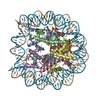 3kwqC  1aoiS S: Starting model for refinement C: citing same article ( |
|---|---|
| Similar structure data |
- Links
Links
- Assembly
Assembly
| Deposited unit | 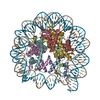
| ||||||||
|---|---|---|---|---|---|---|---|---|---|
| 1 |
| ||||||||
| Unit cell |
| ||||||||
| Details | A single nucleosome is in the asymmetric unit. One nucleosome is composed of 2 chains each of the four histones (H2A, H2B, H3 and H4) in an octamer as well as 146 base pairs of double stranded DNA. No symmetry operations are required to build the biological unit. |
- Components
Components
-Protein , 4 types, 8 molecules AEBFCGDH
| #1: Protein | Mass: 15303.863 Da / Num. of mol.: 2 / Mutation: K57E, G103A Source method: isolated from a genetically manipulated source Source: (gene. exp.)  #2: Protein | Mass: 11263.231 Da / Num. of mol.: 2 Source method: isolated from a genetically manipulated source Source: (gene. exp.)  #3: Protein | Mass: 13978.241 Da / Num. of mol.: 2 Source method: isolated from a genetically manipulated source Source: (gene. exp.)  #4: Protein | Mass: 13524.752 Da / Num. of mol.: 2 / Mutation: S33T Source method: isolated from a genetically manipulated source Source: (gene. exp.)  |
|---|
-DNA chain / Non-polymers , 2 types, 117 molecules IJ

| #5: DNA chain | Mass: 45054.844 Da / Num. of mol.: 2 / Source method: obtained synthetically #6: Water | ChemComp-HOH / | |
|---|
-Experimental details
-Experiment
| Experiment | Method:  X-RAY DIFFRACTION / Number of used crystals: 1 X-RAY DIFFRACTION / Number of used crystals: 1 |
|---|
- Sample preparation
Sample preparation
| Crystal | Density Matthews: 2.65 Å3/Da / Density % sol: 53.52 % |
|---|---|
| Crystal grow | Temperature: 293 K / Method: vapor diffusion / pH: 6 Details: Crystals were grown by vapor diffusion in 8 20 days at 20 C using a droplet containing 4.0 mg ml−1 core particle 50 mM KCl, 70 75 mM MnCl , and 20 mM potassium cacodylate, pH 6.0, ...Details: Crystals were grown by vapor diffusion in 8 20 days at 20 C using a droplet containing 4.0 mg ml−1 core particle 50 mM KCl, 70 75 mM MnCl , and 20 mM potassium cacodylate, pH 6.0, surrounded by silicon oil DC200 (110mPa s; Fluka) and equilibrated against 40 46 mM MnCl2, 35 40 mM KCl and 20 mM potassium cacodylate, pH 6.0, VAPOR DIFFUSION, temperature 293K |
-Data collection
| Diffraction | Mean temperature: 100 K |
|---|---|
| Diffraction source | Source:  ROTATING ANODE / Type: RIGAKU RUH3R / Wavelength: 1.54 Å ROTATING ANODE / Type: RIGAKU RUH3R / Wavelength: 1.54 Å |
| Detector | Type: RIGAKU RAXIS IV++ / Detector: IMAGE PLATE / Date: Oct 17, 2007 / Details: Rigaku Varimax HR |
| Radiation | Protocol: SINGLE WAVELENGTH / Monochromatic (M) / Laue (L): M / Scattering type: x-ray |
| Radiation wavelength | Wavelength: 1.54 Å / Relative weight: 1 |
| Reflection | Resolution: 3.2→20 Å / Num. all: 35254 / Num. obs: 35254 / % possible obs: 100 % / Observed criterion σ(F): 2 / Observed criterion σ(I): 2 / Redundancy: 1.3 % / Biso Wilson estimate: 79.7 Å2 / Rmerge(I) obs: 0.055 / Rsym value: 0.055 / Net I/σ(I): 19.53 |
| Reflection shell | Highest resolution: 3.2 Å / % possible all: 78 |
- Processing
Processing
| Software |
| |||||||||||||||||||||||||
|---|---|---|---|---|---|---|---|---|---|---|---|---|---|---|---|---|---|---|---|---|---|---|---|---|---|---|
| Refinement | Method to determine structure:  MOLECULAR REPLACEMENT MOLECULAR REPLACEMENTStarting model: PDBID 1AOI Resolution: 3.2→20 Å / Cross valid method: THROUGHOUT / σ(F): 2 / σ(I): 2 / Stereochemistry target values: Engh & Huber
| |||||||||||||||||||||||||
| Displacement parameters | Biso mean: 79.7 Å2 | |||||||||||||||||||||||||
| Refinement step | Cycle: LAST / Resolution: 3.2→20 Å
|
 Movie
Movie Controller
Controller


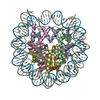


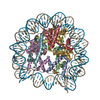
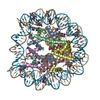
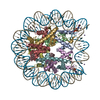
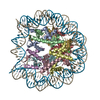
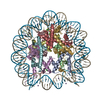
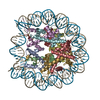
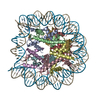

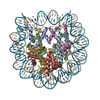
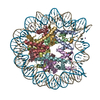
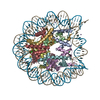
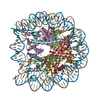
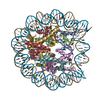

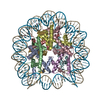
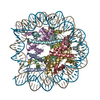

 PDBj
PDBj






































